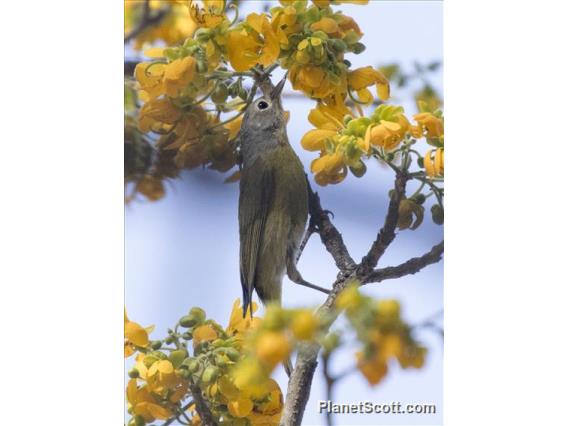Nashville Warbler (Leiothlypis ruficapilla)

Nashville Warbler (Leiothlypis ruficapilla)
×


Nashville Warbler (Leiothlypis ruficapilla)
About Nashville Warbler (Leiothlypis ruficapilla)
- Kingdom: Animals
- Phylum: Chordates
- Class: Birds
- Order: Perching Birds
- Family: New World Warblers
The Nashville warbler is a small songbird in the New World warbler family, found in North and Central America. It breeds in parts of the northern and western United States and southern Canada, and migrates to winter in southern California and Texas, Mexico, and the north of Central America. It has a gray head and a green back, and its underparts are yellow and white.
Source: Wikipedia
Visits
-
2007-04-09
Anza-Borrego Desert State Park, United States of America -
2007-10-14
Ixhuacan de los Reyes, Mexico -
2008-01-06
Singayta, Mexico -
2009-04-04
Glen Canyon Park, United States of America -
2010-02-17
Tacambaro, Mexico -
2010-02-20
Temescaltepec, Mexico -
2012-06-04
Grayling, United States of America -
2012-07-09
Sax-Zim Bog, United States of Americaheard -
2013-04-19
Bolivar Peninsula, United States of America -
2015-09-28
Montrose Point, United States of America -
2016-05-06
Montrose Point, United States of America -
2018-10-11
Golden Gate Park - Middle Lake, United States of America -
2020-01-30
Playa Patzcuaro, Mexico -
2020-02-01
San Sebastian del Oeste, Mexico -
2021-05-26
Montrose Point, United States of America -
2023-05-11
Montrose Point, United States of America -
2023-05-13
Illinois Beach State Park, United States of America -
2024-03-27
Cerro del Fortin, Mexico -
2024-03-29
San Jose del Pacifico, Mexico -
2024-04-01
La Pasionaria, Mexico -
2024-04-02
San Jose del Pacifico, Mexico -
2024-04-05
Santiago, Mexico




